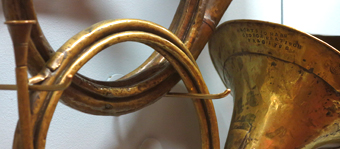The most infrequently performed of his nine symphonies, Beethoven’s Symphony No. 4 has suffered comparative neglect. Positioned between the tremendously celebrated Symphonies Nos. 3 and 5, the work was depicted by Robert Schumann as “a slender Greek maiden between two Norse giants.” Indeed, the work exhibits more stylistic similarities with Beethoven’s first two symphonies, which found inspiration in Haydn’s late symphonies. Beethoven composed the Fourth in 1806 and dedicated it to Count Franz von Oppersdorff, a Silesian nobleman related to Beethoven’s patron Prince Lichnowsky. The symphony opens with a slow introduction, whose stealthy, foreboding dissonances intensify anticipation of the lively and lyrical Allegro, marked by a notable “zigzag” principal theme. Of the Adagio, Berlioz said: “…only amongst the giants of poetic art can we find anything to compare with this sublime page of the giant of music.” The third movement playfully subverts our expectations of rhythm and meter, and the finale is a breathlessly energetic culmination alluding to melodies heard earlier in the symphony.
This was written by Molly Barnes, a doctoral student and teaching assistant in the University of North Carolina Chapel Hill Department of Music. She wrote it for the program of the Orchestre Révolutionnaire et Romantique conducted by John Eliot Gardiner in November 2011.


















